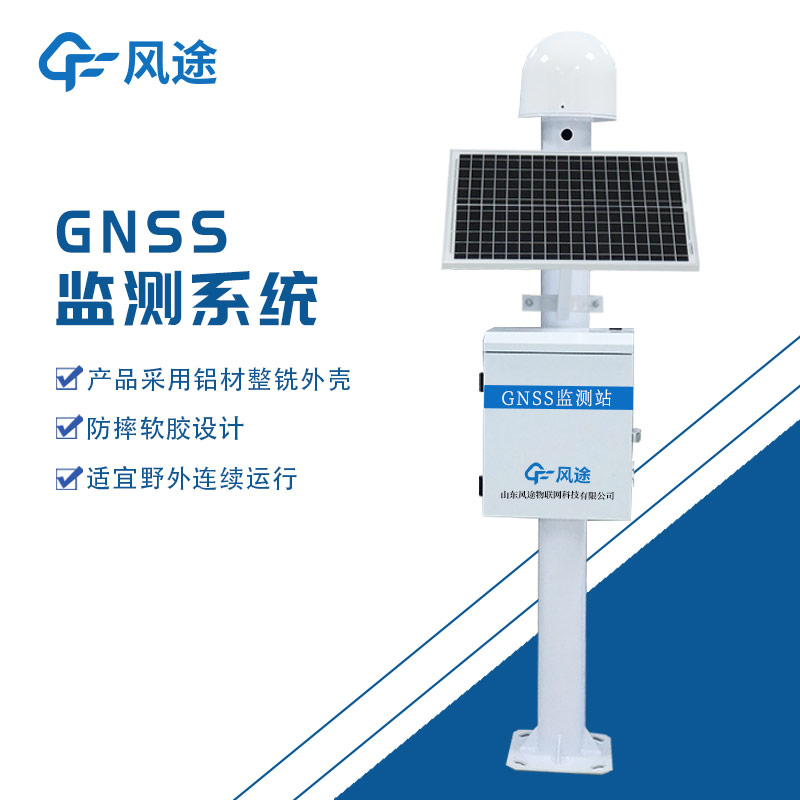Shandong Fengtu IOT Technology Co., Ltd
Sales Manager:Ms. Emily Wang
Cel,Whatsapp,Wechat:+86 15898932201
Email:info@fengtutec.com
Add:No. 155 Optoelectronic Industry Accelerator, Gaoxin District, Weifang, Shandong, China

Sales Manager:Ms. Emily Wang
Cel,Whatsapp,Wechat:+86 15898932201
Email:info@fengtutec.com
Add:No. 155 Optoelectronic Industry Accelerator, Gaoxin District, Weifang, Shandong, China
time:2024-12-20 10:12:42 source:Weather Station viewed:529 time
In the operation and maintenance of expressways, slope disaster monitoring has always been a key aspect. Traditional monitoring methods, limited by high equipment costs, often focus only on key slopes, leaving many potential disaster-prone locations outside the monitoring scope. The sudden nature of slope disasters exacerbates their harm. Once they occur, they often cause serious casualties and huge economic losses.
To effectively address this challenge, Fengtu has developed a Surface Displacement Monitoring System based on "preliminary observation" and "long-term monitoring" to protect the safety of slopes.
The core of it is the millimeter-wave radar. The millimeter-wave radar can achieve an accuracy of 3 - 5 millimeters, enabling it to accurately monitor the deformation of the slope surface; with a sampling frequency as high as 10 times per second, it ensures the timely tracking of the dynamic changes of the slope; the monitoring distance can reach up to 1 kilometer, allowing for wide coverage of large slope areas; and it is low-cost, making up for the shortcoming of high costs of previous monitoring equipment. By organically combining the millimeter-wave radar with other monitoring devices such as GNSS, a complete slope monitoring solution has been constructed, realizing all-weather real-time monitoring of expressway slope disasters from points to surfaces, in an all-round and low-cost manner.
In the implementation of the specific monitoring plan, the first stage is the "preliminary observation" stage. For those locations with potential slope disaster risks, the millimeter-wave radar is first used for preliminary observation. Usually, only 1 - 2 millimeter-wave radars need to be deployed to effectively observe the surface displacement of the entire slope. By collecting and analyzing the data at this stage, the deformation trend of the slope can be clearly understood, and its danger can be accurately evaluated, laying a solid foundation for the subsequent slope prevention and control project planning and long-term monitoring work.
When it is determined through preliminary observation that there is a relatively large displacement of the slope, it enters the "long-term monitoring" stage. At this time, a variety of monitoring devices, such as GNSS, millimeter-wave radar, rain gauges, deep displacement meters, and crack meters, will be comprehensively used according to the unique engineering geological conditions of different slopes to conduct continuous and in-depth monitoring of the slope and collect various dynamic data of the slope in a timely and comprehensive manner.
The introduction of the millimeter-wave radar into the long-term monitoring plan not only reduces the total project cost but also, due to its characteristic of corroborating with GNSS Beidou monitoring data, reduces the false alarm rate of the equipment, making the monitoring results more accurate and reliable, providing a strong guarantee for the long-term stability of expressway slopes and ensuring the safe operation of transportation infrastructure and the safety of people's lives and property.

Water is the most basic and important resource, and the quality of water sources is directly related to people's health. However, the development of industrial society has brought severe water pollution problems. Water quality monitoring from the source to the tap has become the core of ensuring...
Today, I would like to recommend a practical soil moisture monitoring system.This equipment is extremely convenient in installation. It adopts a solar power supply mode and does not require additional maintenance work, greatly saving manpower and time costs. In terms of data stability, accuracy and...
Measuring rainfall is a key aspect of meteorological monitoring, which is directly linked to our daily travel plans and has a significant impact on many areas such as irrigated agriculture, water resource management and transport. So how does the meteorological field measure rainfall?Automatic rainf...
New generation of wind speed and direction sensors...